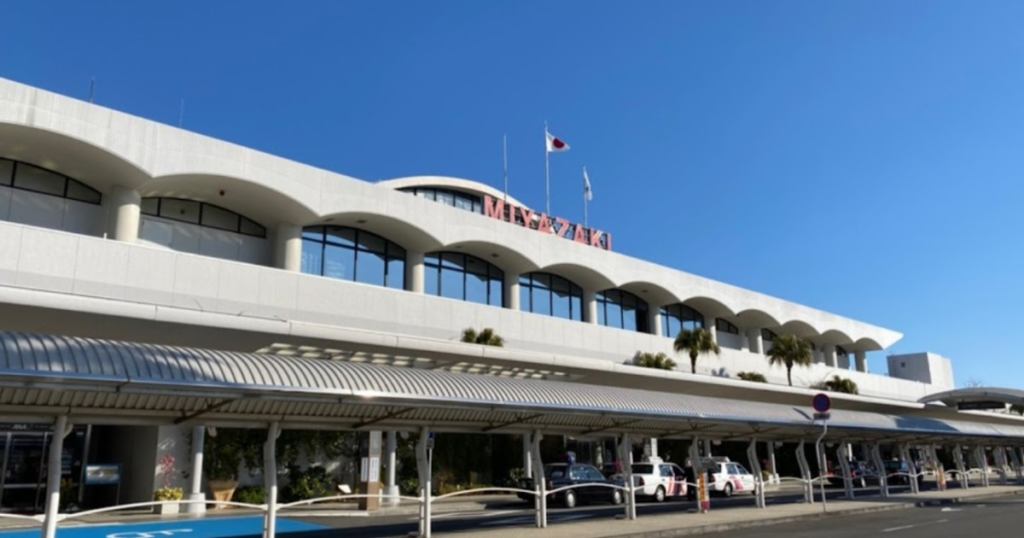World War II bomb explodes at Miyazaki Airport in southwest Japan, leading to a major disruption on October 2, 2024. The explosion occurred near the runway, forcing its immediate closure and causing significant damage to the taxiway.
This sudden blast, caused by a bomb buried beneath the surface for decades, highlights the ongoing dangers posed by unexploded wartime ordnance in Japan. Fortunately, there were no injuries reported, but the explosion left a massive crater and grounded numerous flights, affecting travelers across the region.
The Immediate Impact of World War II Bomb Explode
The explosion from the World War II bomb explode near the runway, creating a crater that measured 7 meters wide and 1 meter deep. This massive damage forced airport authorities to shut down the runway for repairs, causing a significant disruption.
Read : India Overtakes Japan to Become 3rd Most Powerful Country in Asia
According to reports from South China Morning Post, the bomb likely dated back to an air raid during World War II, buried under the surface of the airport for decades. The Japan Transport Ministry confirmed that a bomb disposal team identified the remnants as an American bomb.
Read : The Elite Ten: A Comprehensive Guide to the World’s Most Read Newspapers in 2024
While no injuries were reported, the blast caused considerable chaos at the airport. The immediate effect of the World War II bomb explode was the grounding of 87 flights, leaving passengers stranded.
The runway closure had a far-reaching impact, especially on flights operated by Japan Airlines (JAL) and All Nippon Airways (ANA), which use Miyazaki Airport as a hub for domestic connections to major cities like Tokyo, Osaka, and Fukuoka.

Despite the severity of the explosion, officials have assured the public that there is no imminent danger of further detonations. The focus now is on repairing the damaged taxiway and ensuring the airport returns to normal operations as quickly as possible.
The repairs are expected to be completed by Thursday morning, according to Yoshimasa Hayashi, Japan’s top government spokesperson. Once the repairs are finished, flights are expected to resume promptly.
History of Unexploded Ordnance at Miyazaki Airport
The World War II bomb explodes at Miyazaki Airport is not an isolated incident. Japan still faces a lingering threat from unexploded bombs, decades after the end of the war.
Miyazaki Airport itself was originally a Japanese naval base during World War II, and this history has left a dangerous legacy beneath the surface. In fact, multiple unexploded bombs have been found at Miyazaki Airport over the years, reflecting the airport’s wartime origins.
The recent World War II bomb explode has once again brought attention to the issue of unexploded ordnance in Japan. In 2023 alone, Japan’s Self-Defense Forces disposed of 2,348 bombs weighing 37.5 tonnes, demonstrating the scale of the problem.
While many of these bombs are safely neutralized before they can cause harm, the explosion at Miyazaki Airport is a stark reminder that even after nearly 80 years, unexploded bombs can still pose a significant risk.

The presence of unexploded bombs is not unique to Miyazaki Airport; it’s an issue across many regions of Japan. Numerous bombs were dropped on Japanese soil during World War II, particularly by American forces during air raids.
These bombs, many of which failed to detonate on impact, remain buried in various locations, sometimes dangerously close to populated areas.
Efforts by the Japanese government and military to locate and safely dispose of these bombs are ongoing, but the recent explosion underscores the challenges they face.
Restoring Normalcy at Miyazaki Airport
As the airport authorities work to repair the damage caused by the World War II bomb explode, the focus is on restoring normalcy for the thousands of passengers affected by the disruption.
Miyazaki Airport is an important regional hub, serving both domestic and international flights. The closure of the runway has affected many travelers, particularly those on flights connecting Miyazaki with key cities like Tokyo, Osaka, and Fukuoka.
The airlines impacted by the World War II bomb explode are working diligently to minimize the disruption. Both Japan Airlines and All Nippon Airways have been coordinating with airport officials to resume operations as soon as repairs to the taxiway are completed.
Fortunately, no further bombs have been detected at the airport, and authorities are confident that the situation is under control.
Miyazaki Airport features a single 2,500-meter runway and a terminal that handles both domestic and international flights. Major airlines such as Japan Airlines, All Nippon Airways, and Solaseed Air operate out of Miyazaki, offering regular flights to major Japanese cities as well as international destinations like Taiwan and South Korea.

The airport plays a vital role in connecting the region to the rest of the country and the world, and restoring full operations is a top priority.
Despite the ongoing threat of unexploded ordnance, Japan’s airports, including Miyazaki, are generally considered safe. The country has developed sophisticated bomb detection and disposal techniques, ensuring that incidents like the recent World War II bomb explosion are rare.
However, when they do occur, they serve as a powerful reminder of the long-lasting impact of war and the need for continued vigilance.
The World War II bomb explodes at Miyazaki Airport is a testament to the enduring dangers of unexploded ordnance in Japan. The explosion, which forced the closure of the airport’s runway, caused significant disruption but thankfully resulted in no injuries.
As repairs continue, authorities are working to ensure that the airport returns to full operation as soon as possible. Meanwhile, the presence of unexploded bombs remains an issue in Japan, with the Self-Defense Forces working tirelessly to neutralize these hidden threats.
The incident at Miyazaki Airport underscores the importance of these efforts and serves as a reminder of the lasting legacy of World War II.

